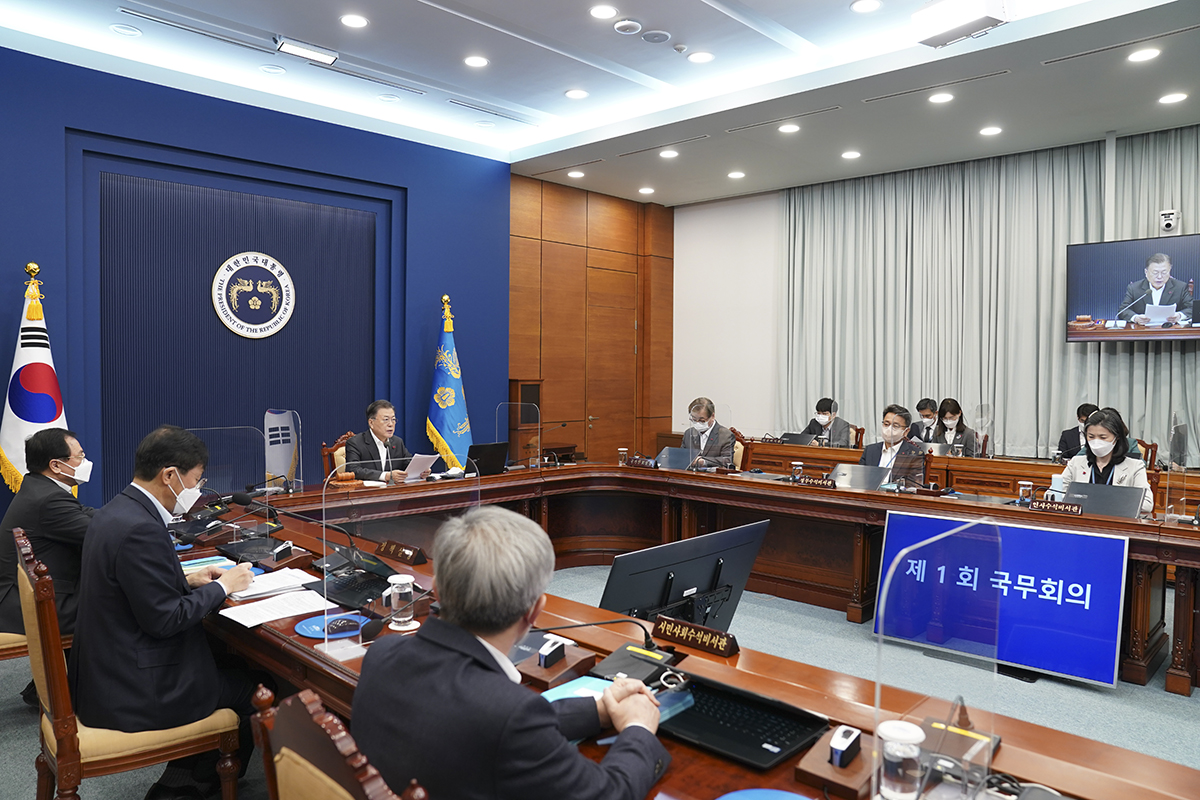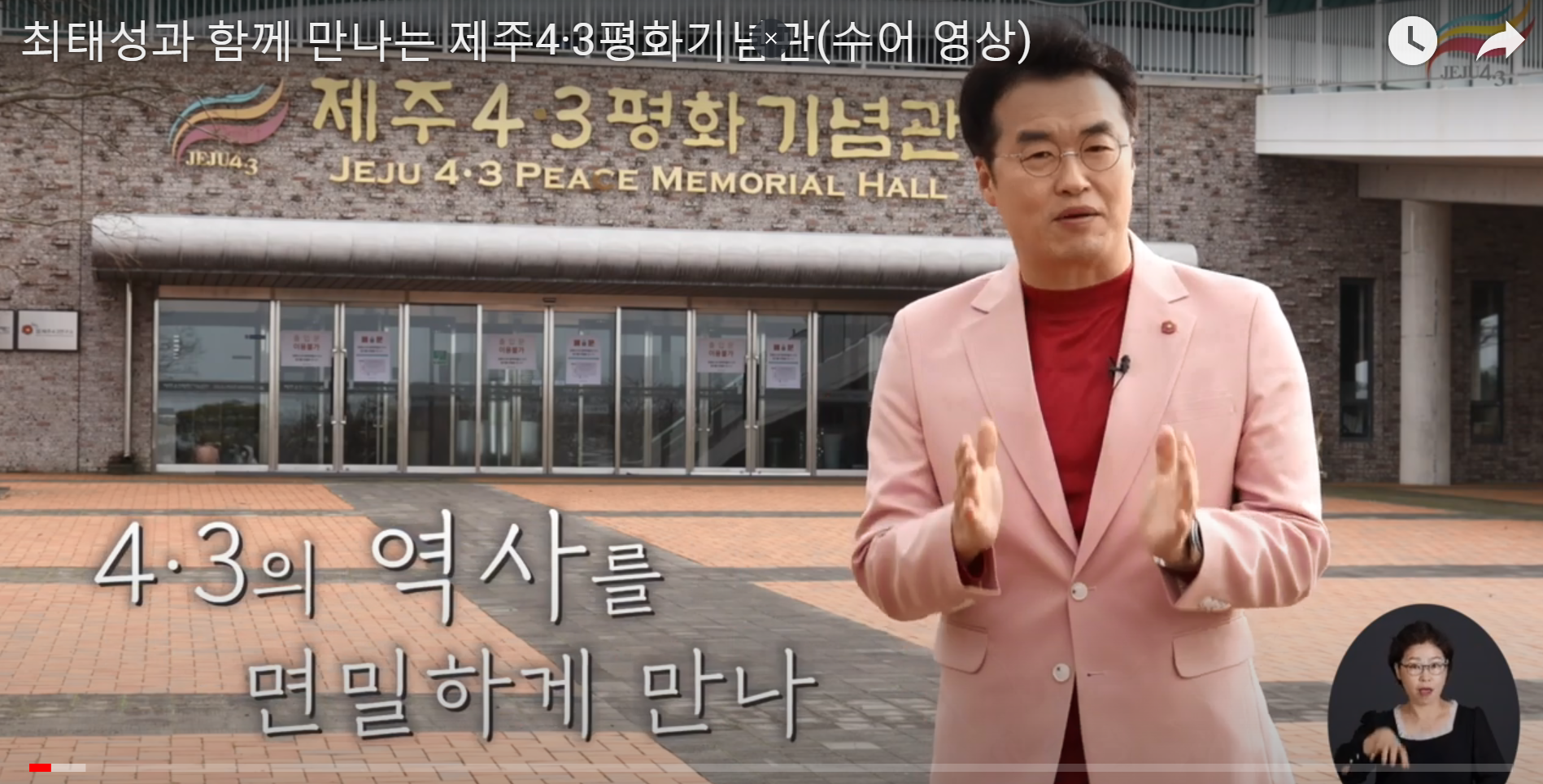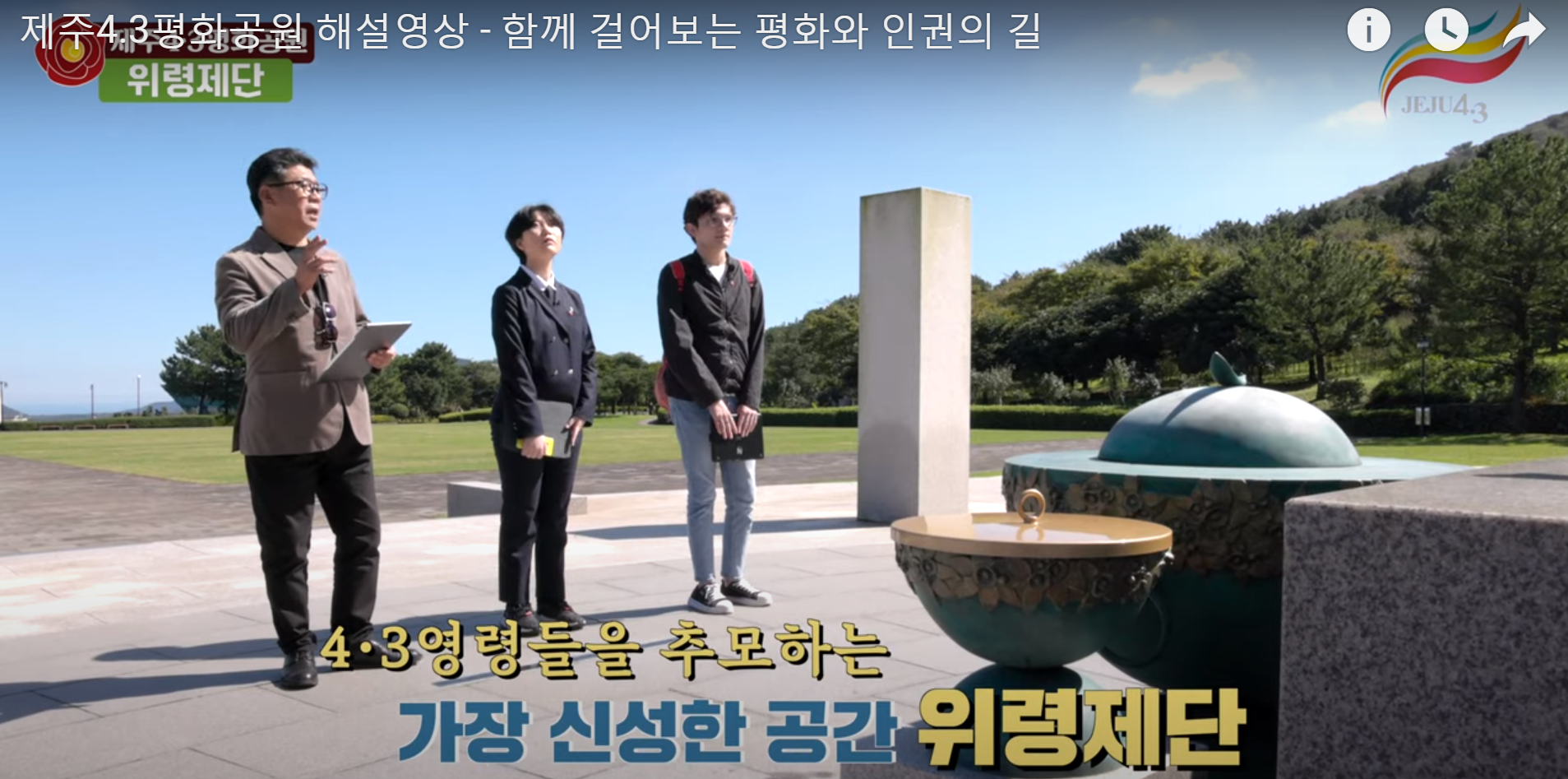Good-will students design Jeju 4·3-themed products
Generational Transmission 4·3·2·1_JMTour of Jungmun High School
Article and photographs by Lee Eun-gyun, a Jungmun High School teacher

Jungmun High School Historical Tourism Product Development Club (JMTour)
The era of the pandemic continues. Due to the COVID-19 spread, schools have experienced many changes, while having to routinize remote classes, quarantine, and disconnected conversation. Contrary to public concerns, however, students adjust themselves more quickly than expected to the changing environment and make changes accordingly. In this issue of “Jeju 4·3 and Peace,” the Generational Transmission 4·3·2·1 section will cover the members of the Jungmun High School Historical Tourism Product Development Club (JMTour). <Editor>
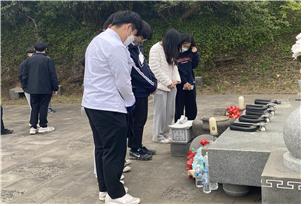
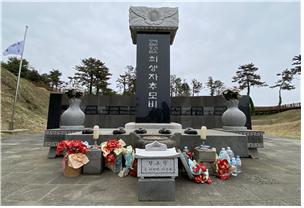
[Students pay silent tribute to the Jeju 4·3 victims after a tour of the Seodal Oreum Memorial Monument for Jeju 4·3 Victims.]
JMTour, a club at Jungmun High School, was established in 2020 to study medical and historical tourism. The JMTour members visit local tourist sites in Jeju Island to conduct research and promote the island’s history.
The members participating in the club activities this year agreed to develop historical tourism products under the theme of Jeju 4·3. These days, most local students have at least a understanding of Jeju 4·3 because elementary, middle, and high schools in Jeju educate them on Jeju 4·3 every year and to derive the value of peace and human rights from the historical event. The current goal of JMTour is to further the extent which students can learn about Jeju 4·3 by designing relevant historical tourism products.
“Since it became nearly impossible for people to travel abroad because of the COVID-19 pandemic, Jeju has become a more favored tourist destination. Tourists visiting Jeju seem to be traveling in search of beautiful scenic sites. In fact, the whole island of Jeju reflects the pain people suffered due to Jeju 4·3. I hope we can create an opportunity for tourists visiting Jeju to think about it.”
Based on the lessons learned from trial and error through the club’s experiences, its members tried to run the club for the 2021 academic term by developing and following a thorough plan. First, an online club room was opened to share opinions among upper-year and lower-year students, while continuously discussing the management of club activities. As a result, they set the goal of producing leaflets on Jeju 4·3-related dark tour contents. To achieve this goal, a five-stage operational plan was established as follows:
Step 1. Visit historical sites related to Jeju 4·3
For the first step, the students decided to conduct a survey in Daejeong, a region relatively close to the school and frequently visited by tourists. As field trips have been rare due to COVID-19, students were eager to get started. Taking a tour of Daejeong, the club members enjoyed the beautiful surroundings and took group photos, savoring the freedom they had not been able to feel in the classroom in recent years. However, there was one place where everyone naturally lowered their voices and felt solemnity at once, and it was in front of the Seodal Oreum Memorial Monument for the Jeju 4·3 Victims.
“I thought I knew about Jeju 4·3. But when I saw the monument in person, my heart ached beyond words. And I wondered why there are a lot of people visiting nearby Songaksan but no one here even though it is not that far away. I really need to tell people about Jeju 4·3.”
Step 2. Find Jeju 4·3-related historical sites scattered throughout Jeju
As the students became more intensely motivated, additional site visits were planned, but field tours were no longer possible due to the strengthened quarantine guidelines to prevent the spread of COVID-19. Given the situation, the club members engaged in activities in the classroom to explore historical sites related to Jeju 4·3 in Jeju instead of surveying them through site visits. First, the students zoned Jeju Island into four regions: the southeast, northeast, southwest, and northwest. Then the students were divided into groups of four members to conduct a survey of data on the zone they were assigned to. It was a valuable experience where both the students and I (their instructor) could gather various information related to Jeju 4·3.
Step 3. Plan tourism products under the theme of Jeju 4·3
Students who secured various data in the second stage decided to select historical sites by zone in consideration of the traveling expenses, traveling distance, means of transportation, and tourist preference from the perspective of tourists. As a result, five places were selected for each zone, and the tourism product was named “Jeju 4·3 Dark Tour.” Then they arranged and selected the pages of the leaflet to be made by referring to several types of leaflets, followed by an in-depth discussion on its potential contents.
“There are already many leaflets related to Jeju 4·3. But they mostly feel hard and heavy. Promotional materials made by tourist businesses look rather cute and friendly. How about illustrating the historical sites?”
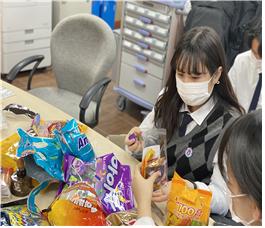
[Handwritten letters and snacks are carefully prepared to distribute to tourists with a leaflet.]
Step 4. Let’s express Jeju 4·3 with an illustration.
Six Classes were held during summer vacation. We invited a Jeju-based instructor specializing in illustrations and explained our goal to customize the course accordingly. Although it was given over a brief period, the students showed interest and followed the educational progress well. Illustrations of four zones selected at the previous stage were born one by one from the hands of students. Although they were far from perfection, that made the leaflet even more cute and friendly.
Step 5. Let’s promote our products ourselves.
The project was fun but the JMTour’s first Jeju 4·3 Dark Tour leaflet was produced with great difficulty. After printing 1,000 copies, the students had lots of conversations about how to promote it. They concluded the leaflets’ success will depend upon the sincerity with which it is distributed in the field. This means that the students decided to deliver their hand-made leaflets to tourists themselves. They also prepared many meaningful items to distribute along with the leaflets, including hand-written letters and snacks. I secured a large amount of camellia flower badges and camellia flower masks through the cooperation of the Jeju Office of Education. However, it was difficult to go outside due to the strengthened COVID-19 quarantine guidelines, and the waiting time was prolonged. Then in November, when the quarantine guidelines were eased, we were finally allowed to go out. Although the outdoor activities were still limited, the club members were happy to put into practice what they had planned. Leaflets were distributed to tourists in Songaksan, Saebyeol Oreum, and Sangumburi to publicize Jeju 4·3.
“To be honest, I was hesitant when distributing the leaflet. I was afraid at one point, thinking, ‘What if they refuse to receive it? What if they just throw it away?’ But every tourist accepted it, and not a single leaflet was thrown away on the road. I cried when people of my parents’ age complimented me and said they were proud of us.”
“What you put your heart into works.” As the saying goes, the students successfully completed their one-year journey.
In 2021, JMTour was selected by the Jeju Special Self-Governing Province Office of Education to implement its Jeju 4·3 Peace and Human Rights Club Supporting Project. This helped run the club smoothly, especially in terms of budget. It is regrettable that the club activities planned amid the COVID-19 pandemic did not operate as expected. However, the students actively engaged in the project by setting a shared goal and helped organize lively history education through the exploration of Jeju 4·3-related historical sites. In particular, designing a tourism product themselves was an opportunity to build capacity before considering career opportunities in the tourism industry. They could also form a consensus that pain exists behind the beauty of tourist attractions on Jeju Island by promoting the tourism product through the distribution of leaflets. I have lofty expectations for JMTour students to grow to empathically understand the painful history of Jeju 4·3, going beyond just memorizing data.
